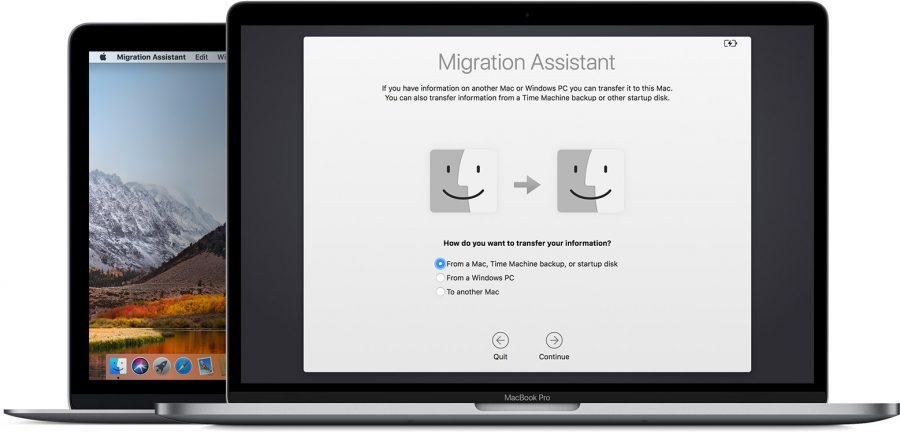
Photo by Apple
Last-Ditch Data Recovery More Difficult on the 2018 MacBook Pro
Touch Bar-equipped MacBook Pro laptops have always featured solid-state storage soldered to the logic board, making it impossible to remove for data recovery, as was possible with hard disk drives. For these Macs, Apple enabled last-ditch data recovery through a special port on the logic board, combined with a custom tool for Apple Authorized Service Providers.
Unfortunately, in its teardown, iFixit discovered that the 2018 MacBook Pro models lack that port, and MacRumors learned from internal Apple documents that Apple’s internal Customer Data Migration Tool does not work with these Macs.
Luckily, data recovery firm DriveSavers says it can still recover data from these laptops, even if the logic board fails or is damaged. Mike Cobb, DriveSavers Director of Engineering, said in a statement:
None of the changes mentioned in the iFixit article regarding the MacBook Pro 2018 have had any effect on our ability to recover data for our customers. This is due to our advanced capabilities in addressing the logic board. DriveSavers has been very successful in recovering data from the 2018 model as well as all others. It is worth noting that customers need to send us the whole device to complete the data recovery service.
The lesson here is simple, though it applies more than ever before to owners of the latest MacBook Pro: Back up your data regularly!
This is why I work COMPLETELY from an externally attached SSD drive on my MacBook Pro which is backed up daily, sometimes more. Internal drive is completely for OS and non-critical files / downloads. I also use encryption app that encrypts to folder on iCloud (yes, I’m very privacy oriented). There is absolutely NOTHING on the internal SSD of my MacBook Pro that’s private, sensitive, or critical.
How very Apple - living way up there in its ivory tower.
There’s no need to bash Apple in a situation where the details are unknown. Almost no one knew that Apple had put a data recovery port on the previous Macs, and we don’t know if it was actually useful, or useful enough to warrant the extra design and manufacturing effort to include it. For all we know, it was impossible to include if Apple was to make it possible to increase the amount of storage to the new levels in the current MacBook Pros.
Plus, as noted, it’s not like DriveSavers and other recovery companies can’t continue to recover data through other means (they likely remove the storage chips from the logic board).
What’s most important is that people should have solid backup strategies so Hail Mary recovery techniques aren’t necessary.
I think Adam makes a good point. We all need a good backup strategy anyway. And keep in mind, this only affects total logic board failure which is very rare. If your MBP’s screen is dead or its RAM goes bad you can still recover the SSD data yourself. In the rare case your logic board is actually toast, that’s when your backup comes in. And in the event that fails, there’s still recovery specialist companies.
An iMac Pro’s data can’t be recovered unless the drive is in its original iMac because it uses hardware encryption below FileVault and stores the key in the T2 chip’s Secure Enclave. Since the 2018 MacBook Pros also have the T2 chip, I expect they’re in the same situation. Whatever DriveSavers is doing, I guess it involves maintaining communication between the storage and the T2 chip.
These design changes are good for protecting your data from falling into the wrong hands but also makes it harder (and probably more expensive) to get your data back into your hands. Hence, backups.
If your RAM goes bad, I don’t think you can boot in Target Disk Mode so it would still prevent you from recovering files from a soldered SSD yourself.
You’re absolutely right. The T2 encryption does change that aspect in a very significant way.
I think you’re right about bad RAM. But that’s a very rare issue too, these days. A dead screen is slightly more common.
Drive Savers is expensive. But anyone who has to use them is paying a fair penalty for their lack of foresight.
Backing up takes a little more effort on a laptop computer in that you have to remember to hook it up to the backup drive when you return to your home or office. But it’s a relatively inexpensive procedure and if you use Time Machine it is automatic, requiting no third-party software. Though keeping an up-to-date clone isn’t a bad idea either. You can schedule SuperDuper! and Carbon Copy Cloner to work automatically as well.
Here’s more from Mike Cobb of DriveSavers about the T2 chip:
In short, DriveSavers needs the user’s password to be able to unlock an encrypted Apple device during data recovery. And, in the case of individuals sending in devices on behalf of someone else, they need permission of the owner and/or proof of ownership.